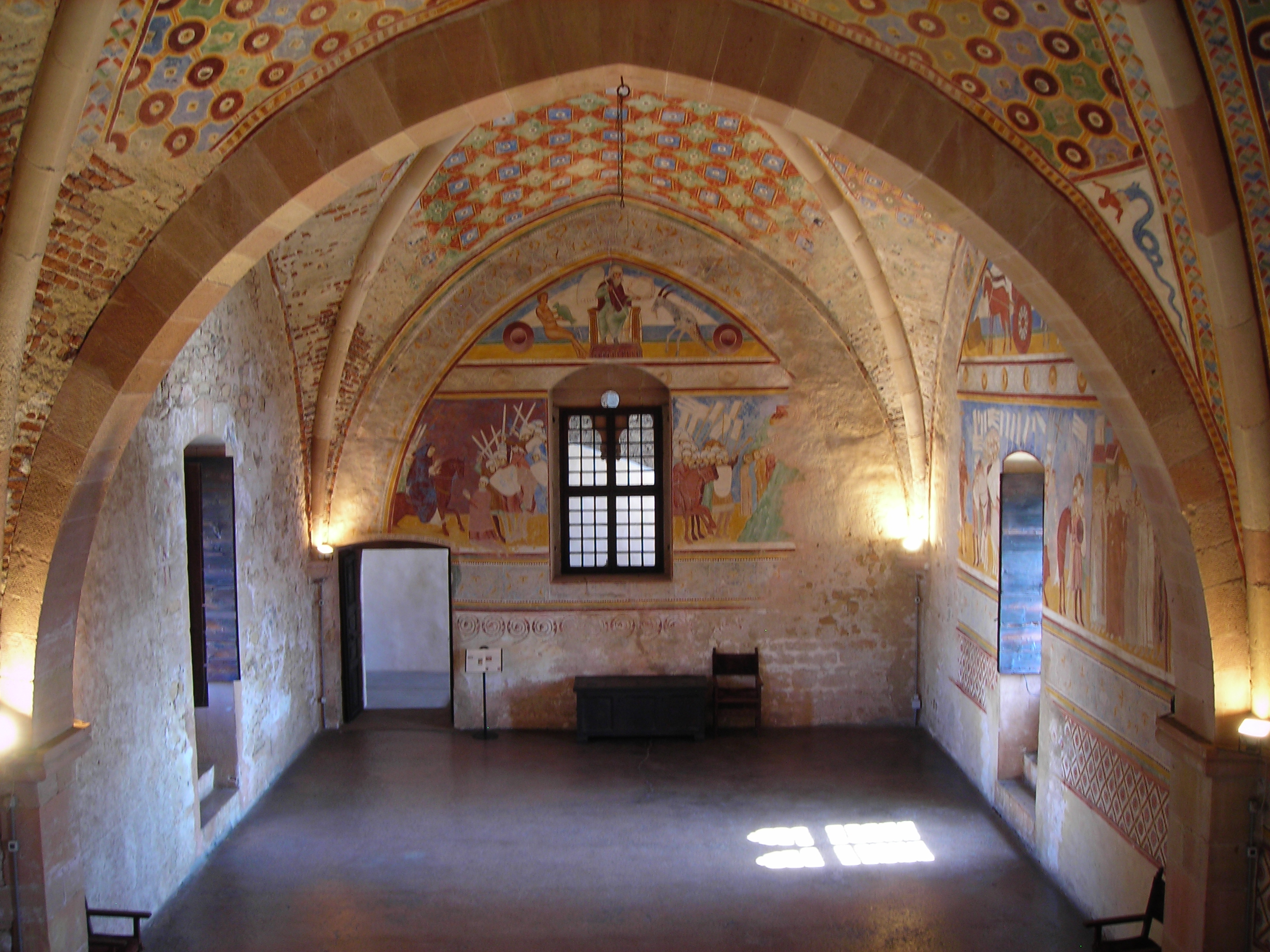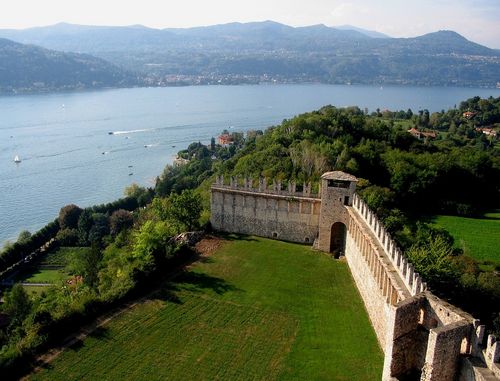
Borromeo Stronghold in Angera
This post is also available in:
 Italiano (Italian)
Italiano (Italian)
The stronghold (“Rocca”) of Angera stands on a spur of rock overlooking the southern shore of Lake Maggiore – a strategic position for controlling the local traffic.
Its defensive structure dates back to Roman and Lombard times, while the oldest parts of the walls were actually built in the XII and XIII centuries.
Originally owned by the Visconti family, it has been a property of the Borromeos – along with the castle and the parish church of Angera – since 1449.
The interiors of the Rocca are truly breath-taking, organized along some historical halls: “Sala di Giustizia”, with frescoes of the XIII century by an anonymous “Master of Angera”. The latter depicted the life of Archbishop Ottone Visconti and, in particular, his victory over the Torrianis in the battle of Desio (1227).
Then, there’s “Sala delle Maioliche”, which houses a collection of over 300 extremely rare pieces of Dutch, French, German, Italian, Spanish, Persian, and Chinese craftsmanship.
In the Rocca, there is also the “Doll and Toy Museum”, opened in 1988 by Princess Bona Borromeo Arese, with over 1.000 dolls made since the XVIII century; so many different materials have been used to manufacture these toys, like wood, wax, papier-mache, porcelain, biscuits, and fabric. The exhibition is spread across 12 rooms, and 2 separate single-themed sections: one dedicated to dolls and toys from non-European cultures, the other to the collection of the Petit Musée du Costume of Tours (collected by Giséle Pesché), featuring an extraordinary collection of French and German automata from the XIX century.
THE GARDEN
The medieval gardens of the stronghold have been recently restored, thanks to a project based on a painstaking study of ancient documents and plans. So far, four parts have been created: “Giardino dei Principi”, “Giardino del Verziere”, “Giardino delle Erbe Piccole”, and ”Boschetto”.
“Giardino dei Principi” is the area reserved for the lord of the castle and used for conversation and music. Surrounded by stone walls, it features a pergola covered with white/red roses and jasmine, grass-covered brick seats, and a lawn bordered by orange vases (Citrus × sinensis) and citron (Citrus medica).
Below the pergola, the brick seats are covered with grass, with a central fountain under a chestnut dome, symbolizing the union between heaven and Earth.
“Giardino del Verziere” is enclosed within hedges of common plum (Prunus domestica) and white roses; it features several fruit plants like apple trees (Malus domestica), pear trees (Pyrus communis), fig trees (Ficus carica), loquat (Mespilus germanica), pommegranates (Punica granatum), and quince trees (Cydonia oblonga). There is also a central fountain with fish, and a vegetable garden.
“Giardino delle Erbe Piccole” is made of two raised lawns with small odoriferous, medicinal, and dyeing herbs, along with annual flowers; there are bordered by olive trees (Olea europaea), and almond trees (Prunus dulcis).
Herbs include common wormwood (Artemisia absinthium), pot marigold (Calendula officinalis), pennyroyal (Mentha pulegium), and castor bean (Ricinus communis).
The “Boschetto” reminds us of the importance of the forest in medieval times, for its spontaneous herbs and fruits collected by the monks.
There’s a topiary clipped yew (Taxus baccata), a lawn crossed by a stream that eventually reaches a pond full of iris, buttercup, scorpion grasses, and water mint (Mentha aquatica).
Around this area, there are laurels (Laurus nobilis), cypresses (Cupressus sempervirens), common hazel (Corylus avellana), and evergreen oaks (Quercus ilex).
This post is also available in:
 Italiano (Italian)
Italiano (Italian)
Contatti
Via Rocca Castello 2 - 21021 Angera(VA)
0331 931300
roccaborromeo@isoleborromee.it
Altre info
Ingresso: euro 8,00 adulti; euro 5,00 ragazzi; tariffe speciali per gruppi; biglietto speciale per l'ingresso combinato alla Rocca Borromeo, all'Isola Bella e all'Isola Madre.
Aperto dalla metà di marzo alla seconda metà di ottobre.
Dalle ore 9.00 alle ore 17.30 tutti i giorni.




